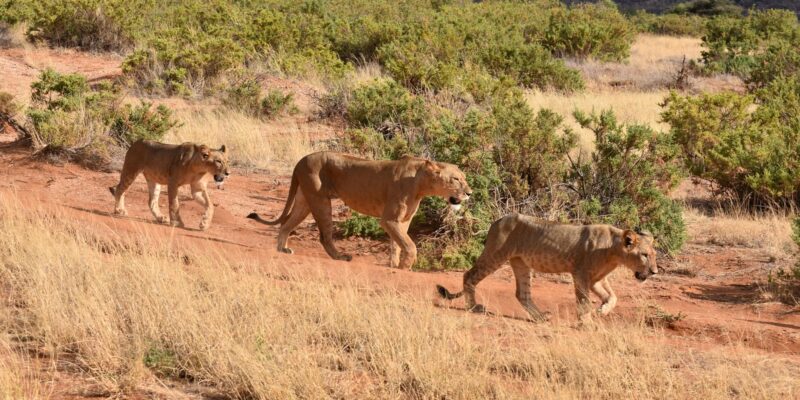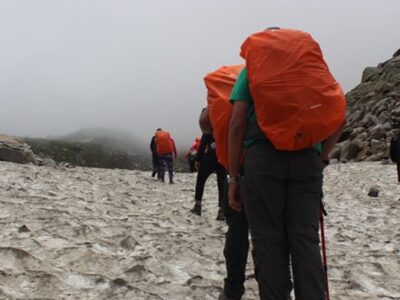
Explore on a journey through Uganda’s unspoiled wilderness as we unveil the top 10 national parks that showcase the country’s diverse landscapes and abundant wildlife, perfect for unforgettable Africa safari holidays. From the iconic savannahs of Murchison Falls to the lush rainforests of Bwindi Impenetrable, each park offers a unique adventure waiting to be discovered. Get ready to witness the majestic African elephants roaming freely in Queen Elizabeth National Park and encounter the endangered mountain gorillas in Mgahinga Gorilla National Park. Whether you’re a nature enthusiast, a wildlife lover, or an adventure seeker, Uganda’s national parks promise an unforgettable experience amidst breathtaking scenery and fascinating biodiversity.
Uganda, often referred to as the “Pearl of Africa,” is a land brimming with natural treasures. Its national parks are like chapters in a captivating story, each offering a glimpse into the country’s rich tapestry of landscapes and wildlife. Let’s embark on a journey through the top 10 national parks that define Uganda’s untamed beauty.
1. Murchison Falls National Park:
Murchison Falls National Park is Uganda’s largest national park, spanning over 3,840 square kilometers, and it’s an essential destination for anyone planning a Uganda safari. The centerpiece of the park is the breathtaking Murchison Falls, where the Nile River plunges through a narrow gorge, creating a powerful cascade. Visitors can embark on game drives across the savannah plains, encountering iconic African wildlife such as elephants, giraffes, and buffaloes. Boat safaris along the Nile offer a chance to spot hippos, crocodiles, and a myriad of bird species, including the elusive shoebill stork. For the adventurous, guided hikes to the top of the falls provide unparalleled views of the surrounding landscape.
2. Bwindi Impenetrable National Park:
Bwindi Impenetrable National Park is a UNESCO World Heritage site and one of the most biologically diverse areas on Earth. Its dense forests are home to over 400 mountain gorillas, representing more than half of the world’s population. Gorilla trekking experiences allow visitors to venture into the heart of the jungle, guided by experienced trackers, to observe these majestic primates in their natural habitat. Beyond gorilla encounters, Bwindi is a haven for birdwatchers, with over 350 bird species, including 23 Albertine Rift endemics. The park’s rugged terrain also offers opportunities for nature walks, cultural visits to local communities, and scenic drives through the mist-covered hills.
3. Queen Elizabeth National Park:
Named after Queen Elizabeth II, this national park is renowned for its diverse ecosystems and abundant wildlife. The park’s landscapes range from savannah and wetlands to forests and crater lakes, providing a habitat for a wide variety of species. Tree-climbing lions are a highlight here, often spotted lounging in the branches of fig trees. Boat cruises along the Kazinga Channel offer an up-close look at hippos, crocodiles, and a multitude of water birds, while game drives through the Ishasha sector reveal herds of grazing Uganda kob and buffalo. Cultural experiences, such as visits to local fishing villages and traditional performances, offer insights into the region’s rich heritage.
4. Kidepo Valley National Park:
Located in Uganda’s remote northeastern corner, Kidepo Valley National Park is a wilderness untouched by mass tourism. Its vast plains are home to a diverse array of wildlife, including elephants, lions, leopards, and cheetahs. The park’s rugged terrain, characterized by rocky outcrops and seasonal rivers, provides a dramatic backdrop for game drives and bush walks. Birdwatchers will delight in the park’s avian diversity, with over 475 species recorded, including ostriches, secretary birds, and the endemic Karamoja apalis. Cultural interactions with the indigenous Karamojong people offer visitors a glimpse into traditional pastoralist lifestyles and age-old customs.
5. Mgahinga Gorilla National Park:
Nestled in the Virunga Mountains, Mgahinga Gorilla National Park is a sanctuary for both mountain gorillas and golden monkeys. While gorilla trekking is the park’s main draw, guided hikes to the summits of Mount Muhabura and Mount Gahinga offer panoramic views of the surrounding volcanoes and the Rift Valley below. The park’s diverse habitats, ranging from bamboo forests to alpine meadows, support a variety of wildlife, including forest elephants, buffalo, and several primate species. Cultural experiences, such as visits to Batwa pygmy communities and traditional performances, provide insights into the region’s indigenous heritage.
6. Rwenzori Mountains National Park:
The Rwenzori Mountains, also known as the “Mountains of the Moon,” are a UNESCO World Heritage site and home to Africa’s third-highest peak, Mount Stanley. Rwenzori Mountains National Park offers some of the most challenging trekking experiences on the continent, with rugged terrain, glacial valleys, and dense montane forests. Trekkers can embark on multi-day expeditions to summit Mount Stanley, passing through diverse ecosystems teeming with unique flora and fauna, including giant lobelias and endemic Albertine Rift species. The park’s pristine landscapes and alpine scenery provide a photographer’s paradise, with opportunities to capture breathtaking vistas and dramatic sunsets against the backdrop of snow-capped peaks.
7. Semuliki National Park:
Semuliki National Park is a biodiversity hotspot located within the Albertine Rift Valley. Its lush forests, hot springs, and savannah grasslands support a remarkable diversity of plant and animal life. The park is renowned for its birdwatching opportunities, with over 400 bird species recorded, including the elusive shoebill stork. Chimpanzee tracking is another popular activity, offering visitors the chance to observe these intelligent primates in their natural habitat. Guided nature walks through the park’s verdant landscapes reveal hidden waterfalls, ancient fig trees, and medicinal plant species used by local communities for centuries.
8. Lake Mburo National Park:
Lake Mburo National Park is a compact gem located in the heart of Uganda. Its diverse habitats, including acacia woodlands, wetlands, and rolling hills, provide a haven for wildlife and outdoor enthusiasts alike. Game drives and guided walks offer opportunities to spot zebras, impalas, and elands, while boat safaris on Lake Mburo reveal hippos, crocodiles, and an abundance of birdlife. Horseback riding and mountain biking are popular ways to explore the park’s scenic trails, with panoramic views of the surrounding landscape. Cultural experiences, such as visits to nearby fishing villages and cattle ranches, provide insights into the traditional way of life in rural Uganda.
9. Mount Elgon National Park:
Mount Elgon National Park is a rugged wilderness straddling the Uganda-Kenya border. Its ancient volcanic crater, one of the largest in the world, is surrounded by dense montane forests, dramatic waterfalls, and alpine meadows. The park is a paradise for hikers, with a network of trails leading to the summit of Mount Elgon and the stunning Sipi Falls. Along the way, trekkers may encounter a variety of wildlife, including elephants, buffaloes, and the elusive leopard. Birdwatchers will delight in the park’s avian diversity, with over 300 bird species recorded, including the endangered lammergeier and Jackson’s francolin.
10. Toro-Semliki Wildlife Reserve:
Tucked away in Uganda’s western Rift Valley, the Toro-Semliki Wildlife Reserve is a hidden gem waiting to be discovered. Its diverse habitats, ranging from savannah and wetlands to gallery forests and swamps, support a rich array of wildlife. The reserve is known for its rare and elusive species, including the shoebill stork, the sitatunga antelope, and the pygmy hippopotamus. Guided game drives and boat safaris offer opportunities to spot these unique creatures, along with more common species such as elephants, buffaloes, and hippos. Cultural encounters with the indigenous Batwa and Bakonjo communities provide insights into traditional lifestyles and cultural practices.
Also Checkout: https://emperiortech.com/









